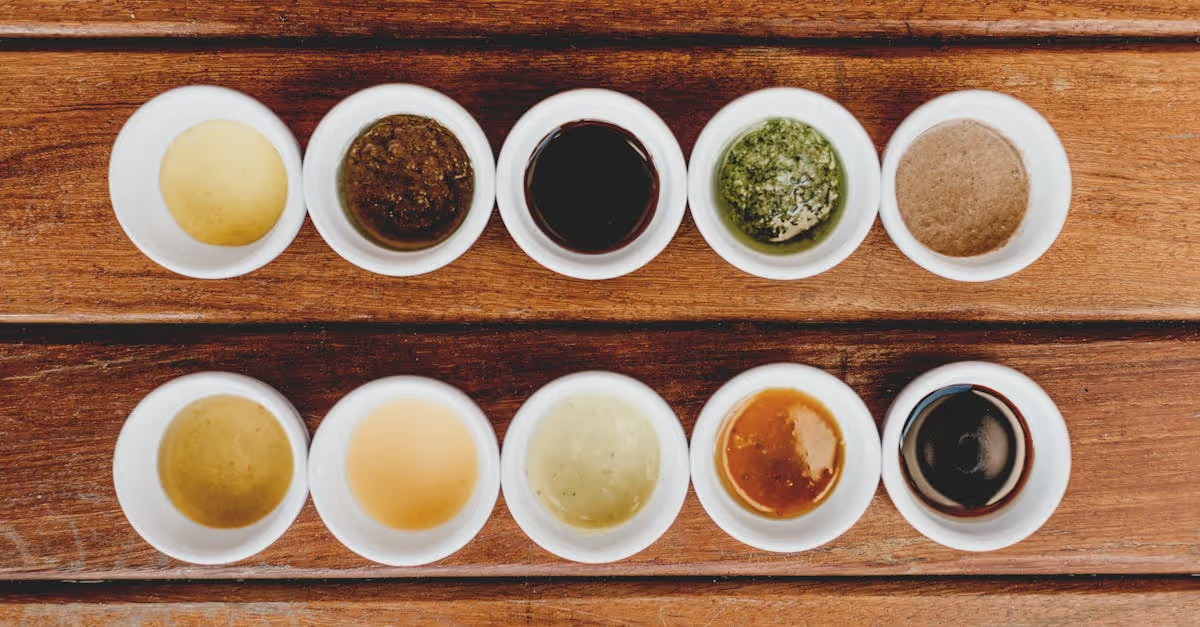Key Takeaways
- Importance of Resurfacing: Pool resurfacing enhances aesthetics, prolongs pool life, and improves safety, ultimately increasing homeowner satisfaction and property value.
- Material Options: Various materials, including plaster, pebble finishes, quartz, and acrylic, offer distinct benefits such as cost-effectiveness, durability, and aesthetic appeal, allowing homeowners to choose based on budget and preference.
- Enhanced Longevity: Quality resurfacing materials can extend the pool's lifespan significantly, with options like pebble finishing and quartz lasting between 15 to 30 years, reducing maintenance and repair costs.
- Safety Considerations: Textured surfaces from finishes like Pebble Tec provide slip resistance, making swimming areas safer for children and reducing accidental falls.
- Budget and Maintenance: Homeowners should consider both initial costs and long-term maintenance expenses when selecting resurfacing options, as some choices may require more frequent upkeep.
- Community Engagement: Resurfacing not only beautifies individual homes but also fosters community connections as homeowners share experiences and improvements, enhancing neighborhood pride.
When it comes to maintaining a beautiful and functional pool, resurfacing is a game changer. Did you know that nearly 80% of homeowners report increased enjoyment of their pools after resurfacing? This essential service not only enhances the aesthetic appeal but also prolongs the life of the pool, making it a worthwhile investment.
In this article, we’ll dive into the various materials used in pool resurfacing, from plaster to pebble finishes, and explore the unique benefits each offers. Whether you're looking to refresh an aging pool or increase property value, understanding these options can help us make informed decisions that elevate our outdoor spaces. Let’s uncover the details that can transform our pools into stunning retreats.
Overview of Pool Resurfacing Services
Pool resurfacing revitalizes worn-out pools, enhancing their look and durability. We focus on restoring a pool's surface to combat issues like cracks, stains, and rough textures. This process is crucial for maintaining safety and aesthetics.
Various options exist for pool resurfacing materials. Each type serves different needs and preferences.
Types of Materials Used
- Plaster: This is a common choice due to its affordability and smooth finish. Plaster suits traditional pools well and creates a crisp, clean appearance.
- Pebble Finish: Pebble surfaces blend small stones with concrete. This option offers a natural look and increased durability. The texture provides extra grip, making it safer for swimmers.
- Fiberglass: This material is a good option for quick installations. The smooth surface reduces chemical usage and requires less maintenance.
- Quartz: Combining plaster with quartz aggregates creates a radiant finish. Its durability and resistance to staining make it an attractive choice for homeowners.
Understanding these materials helps us make informed decisions that match our preferences and budgets.
Benefits of Pool Resurfacing
Increasing our pool's lifespan stands out as a primary benefit. With resurfacing, we address surface issues and prevent potential leaks. A well-maintained pool also reflects positively on property values, enhancing curb appeal and enticement for buyers.
Improving chemical balance is another advantage. Smooth surfaces reduce the need for harsh chemicals, promoting a healthier swimming environment. Happy swimmers lead to happy homeowners, after all!
Aesthetic appeal can't be overlooked. Freshly resurfaced pools look inviting and luxurious, making gatherings feel more special. Picture hosting friends for a backyard barbecue while showing off a stunning pool—it creates lasting memories.
Engaging the Community
What do we envision for our dream pool? Enhancing our outdoor spaces can bring the community together, creating shared experiences and a feeling of belonging. Whether adding features like water slides or luxurious tiling, personalization reflects our styles and values.
We might also share stories with neighbors about renovation journeys. Did anyone tackle resurfacing and discover hidden treasures beneath the old plaster? Maybe someone turned a standard rectangular pool into a unique shape!
Pool resurfacing services can be invaluable to every homeowner. By understanding different material options and their benefits, we take an active role in our pool's maintenance and transformation. This enhances not only our enjoyment but also strengthens our community bonds.
Types of Resurfacing Materials
Different materials are available for pool resurfacing, each offering distinct advantages. We'll delve into a few popular options to help in your decision-making.
Plaster
Plaster consists of a blend of cement, sand, and water. It's one of the most affordable resurfacing choices, making it a favorite among homeowners. A plaster surface can last 15-20 years with proper upkeep. It's easy to repair too; minor issues can often be fixed without extensive work. Plaster comes in various colors, allowing for customization. However, keep in mind that it requires consistent maintenance and may stain or crack over time, especially under harsh conditions.
Quartz
Quartz pool resurfacing combines crushed quartz with resin and is known for its durability and aesthetic appeal. This option is more resilient than plaster, with added strength that resists cracking and staining. With a variety of colors and finishes, it creates a sophisticated look. Quartz also enhances the pool's chemical balance, contributing to clearer water. This option typically lasts longer than plaster, often exceeding 20 years, making it a worthwhile investment for many.
Pebble
Pebble finishes provide a natural appearance, often resembling a beach or riverbed. Made from small pebbles mixed with concrete, this surface is both slip-resistant and durable. Homeowners appreciate its attractive look and variety of textures. Pebble finishes stand up well against wear and tear, lasting around 20-30 years. On the downside, they may require more initial investment than plaster, but the benefits often justify the cost.
Acrylic
Acrylic resurfacing offers a smooth and sleek alternative. This option utilizes acrylic polymer to create a durable and flexible surface. It's quick to install, with minimal downtime for pools. Acrylic finishes come in numerous colors and can mimic the look of tiles or stone. They resist algae growth and are easy to clean, making maintenance straightforward. Homeowners should consider the longevity of acrylic, which typically lasts 10-15 years, depending on how well it’s maintained.
Benefits of Pool Resurfacing
Pool resurfacing offers several advantages, making it a worthwhile investment for homeowners. We’ll explore some key benefits below.
Enhanced Aesthetics
A fresh pool surface transforms an ordinary backyard into a stunning oasis. A newly resurfaced pool adds colors and textures that can match any landscape. Imagine relaxing by a bright blue pool that sparkles under the sun—what a wonderful visual! Different options like plaster or Pebble Tec allow for various styles and finishes. Which color palette would reflect your personality best?
Improved Safety
Safety is crucial for family fun. A well-resurfaced pool surface prevents slips and falls, especially for children who often run around. Textured surfaces, like those found in Pebble Tec finishes, provide grip and reduce accidents. Nobody enjoys the surprise of an unexpected splash from a slip! So, when you consider resurfacing, think about safety as a significant benefit. What steps are you taking to make your backyard safer for everyone?
Increased Longevity
Resurfacing extends your pool's lifespan. Materials like quartz or Pebble Tec can last 15 to 30 years with proper maintenance. This longevity reduces the frequency and cost of repairs. Imagine spending less time worrying about your pool and more time enjoying it! Taking the plunge into resurfacing today means fewer repairs down the line. Who wouldn’t want a hassle-free and beautiful pool for years to come?
Factors to Consider When Resurfacing
When considering pool resurfacing, multiple factors influence our choices and decisions. Each aspect plays a vital role in achieving the best results.
Cost Considerations
Cost impacts our choices significantly. We need to consider initial installation expenses, ongoing maintenance, and potential repair costs. For example, while plaster might seem friendly on the wallet initially, its requirement for more upkeep can lead to higher costs over time. On the other hand, pebble finishes come with a higher price tag but offer durability that reduces the need for frequent repairs. Pool resurfacing often requires a sound budget plan. Are we prepared to invest upfront for long-lasting benefits?
Choosing the Right Material
Selecting the right resurfacing material is crucial. Each option caters to different preferences and styles. Plaster offers affordability and a range of colors but requires regular maintenance. Pebble finishes boast visual appeal and resistance to chemicals but may stretch our budget. Concrete stands out for its durability but can lack the aesthetic variety we desire. Understanding our priorities helps us choose effectively. Which features matter most to us? Looks, durability, or maintenance?
Timing and Maintenance
Timing involves choosing the right season for resurfacing. Warmer months often yield better results, preventing issues from temperature fluctuations. Additionally, ongoing maintenance determines how well our chosen material holds up. Regular cleaning and chemical balancing can prolong the life of materials like plaster. Consider how our lifestyle activities affect pool use and maintenance. How can we maximize enjoyment while maintaining our pool’s appearance?
Conclusion
Pool resurfacing is more than just a cosmetic upgrade; it’s an investment in our outdoor oasis. By choosing the right materials and understanding their benefits, we can enhance both the functionality and beauty of our pools. The joy of a refreshed swimming space not only elevates our enjoyment but can also increase our property values.
As we consider resurfacing options, let’s remember the importance of selecting materials that align with our needs and preferences. With the right approach, we can create a safe and visually appealing environment for family and friends to enjoy for years to come. Embracing this process allows us to transform our pools into the stunning retreats we’ve always envisioned.
Frequently Asked Questions
What is pool resurfacing?
Pool resurfacing is the process of renewing the surface of a swimming pool, improving its appearance, durability, and safety. It can involve various materials such as plaster, quartz, pebble finishes, and acrylic to suit different preferences and budgets.
What are the benefits of resurfacing a pool?
Resurfacing a pool enhances its aesthetic appeal, increases durability, and improves chemical balance. It can also extend the pool's lifespan, reduce repair costs, and potentially boost property value.
How often should a pool be resurfaced?
Typically, a pool should be resurfaced every 10 to 30 years, depending on the material used. For example, plaster may last 15-20 years, while pebble finishes can last 20-30 years with proper maintenance.
What materials are commonly used for pool resurfacing?
Common materials include plaster, quartz, pebble finishes, and acrylic. Each offers unique benefits, such as affordability, durability, and slip resistance, to cater to different needs and styles.
How does resurfacing impact pool safety?
Resurfacing can improve safety by providing textured surfaces that reduce slipping hazards, making pools safer, especially for children.
Can resurfacing really increase my property's value?
Yes, resurfacing can enhance the visual appeal and functionality of a pool, making the property more attractive to potential buyers, thus positively impacting its market value.
What factors should I consider before resurfacing my pool?
Consider the budget for initial installation and long-term maintenance, the choice of materials, and the optimal timing for resurfacing, usually in warmer months for better results.
How do I maintain a resurfaced pool?
Regular maintenance includes cleaning, proper chemical balance monitoring, and routine inspections of the surface to address any issues early and prolong the lifespan of the resurfacing material.






